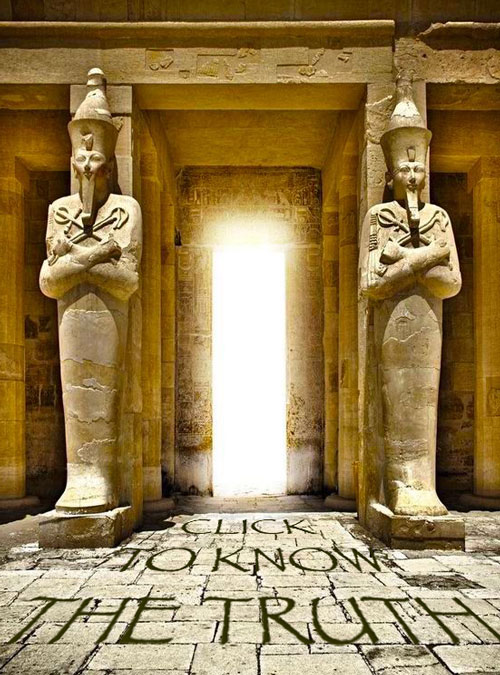The Cosmic Furnace
Since the dawn of time, alchemists have turned base metals into gold.

Our ancestors considered gold to be the highest form of matter. As human knowledge advanced, some aspects of alchemy gave way to the sciences we know today. And yet, with all our advances in chemistry and technology, the origin story of gold remained unknown until now. Using our most advanced telescopes and detectors, we’ve seen it created in the cosmic fires of two colliding stars.
But first we must take a closer look at iron. At atmospheric pressure, three allotropic forms of iron exist: alpha iron (α), gamma iron (γ) and delta iron (δ). These forms use either the body-centered cubic (BCC) or the face-centered cubic (FCC):

There is however, a fourth form of iron called hexaferrum (ε-Fe). At very high pressure, this allotrope displays a hexagonal close-packed (HCP) phase that looks like this:

Above: hexagrams and golden rectangles within ε-Fe
While hexaferrum is academic when it comes to metallurgical engineering, it starts to have significance when we look at the centre of the planet. The pressure and temperature of Earth’s iron core are in the order of 1500–3500 kbar and 3000 ± 1000 °C which creates a stable environment for this element. For this reason, many experimental studies have investigated the properties of HCP iron under extreme pressures and temperatures. When the pressure is lowered, ε-Fe transforms back to ferrite (α-Fe).
So pressure and temperature are key factors when we start to transform the chemical structure of iron. While we’ve explored hexaferrum above, there is actually another form of iron that exists at even higher pressures and temperatures. It has an orthorhombic or double HCP structure and is stable at pressures above 50 GPa and temperatures of at least 1500 K. This is found in star cores:

In crystallography, the orthorhombic crystal system is one of the seven crystal systems. Orthorhombic lattices result from stretching a cubic lattice along two of its orthogonal pairs by two different factors, resulting in a rectangular prism with a rectangular base (aby b) and height (c), such that a, b, and care distinct. All three bases intersect at 90° angles, so the three lattice vectors remain mutually orthogonal:

In three dimensions, there are four orthorhombic Bravais lattices. If we look at the last structure above, the right rhombic prism (body centred) we find its internal dimensions echoed by the pyramids:

If stars gives light and life to the cosmos, then human beings must surely be a chemical result of their thermonuclear reactions. If alchemy was the esoteric science of converting base metals into gold, could there be a link between iron and gold? Are humans merely “ironmen” or do we have the ability to transform into something more valuable?
Well, one way gold is formed in the universe is by the collision of two neutron stars that by definition are dense in iron. Indeed, most of the heavy elements in our solar system likely originated from a single neutron star collision. This ancient neutron star merger would have seeded the solar system with about 1.1 billion billion tons of heavy elements. Other phenomena can generate elements heavier than iron on the periodic table (such as the explosions of supernovas) however these would generate different patterns of elements than the ones found in ancient meteorites.
Another way to say this is that neutron stars convert iron into gold. This implies that contained within the intense chemical reactions of their combined cores is the geometry of transmutation. The swastika then, is symbolic of this.

Above: two neutron stars form the swastika in space
What these crystalline shapes indicate is that the universal consciousness we call LOVE uses the ferrous structure to manifest in this reality. Stars appear to us as twinkling lights, however there is a hidden structure in their thermonuclear reactions that appears in the fundamental building blocks of life.
In 2019, scientists from the Lawrence Livermore National Laboratory and the Carnegie Institution for Science found that the structure of gold began to change from FCC to BCC at around 220 GPa (or 2.2 million times Earth’s atmospheric pressure). When the researchers compressed gold beyond 250 GPa to pressures found at the center of the Earth, it melted.


Above: at high pressure gold transforms from FCC (left) to BCC (right)
If you shine sunlight through a prism and you will see the Sun’s spectrum—the colours of the rainbow spread from short wavelength (blue light) to long wavelength (red light). This spectrum contains the fingerprints of the elements bound up and forged in the Sun. Each element is marked by a unique fingerprint of lines in the spectrum, reflecting the different atomic structure.
So the spectrum of neutron stars colliding (a kilonova) contained the fingerprints of the heaviest elements in the universe. Its light carried the telltale signature of the neutron-star material decaying into platinum, gold and other so-called “r-process” elements.

Above: the visible and infrared spectrum of kilonova indicate heavy metal creation
For the first time, humans have seen alchemy in action—the universe turning base elements into gold. So the gold or platinum jewellery you might be wearing right now was forged in the atomic fire of a neutron star collision billions of years ago.
